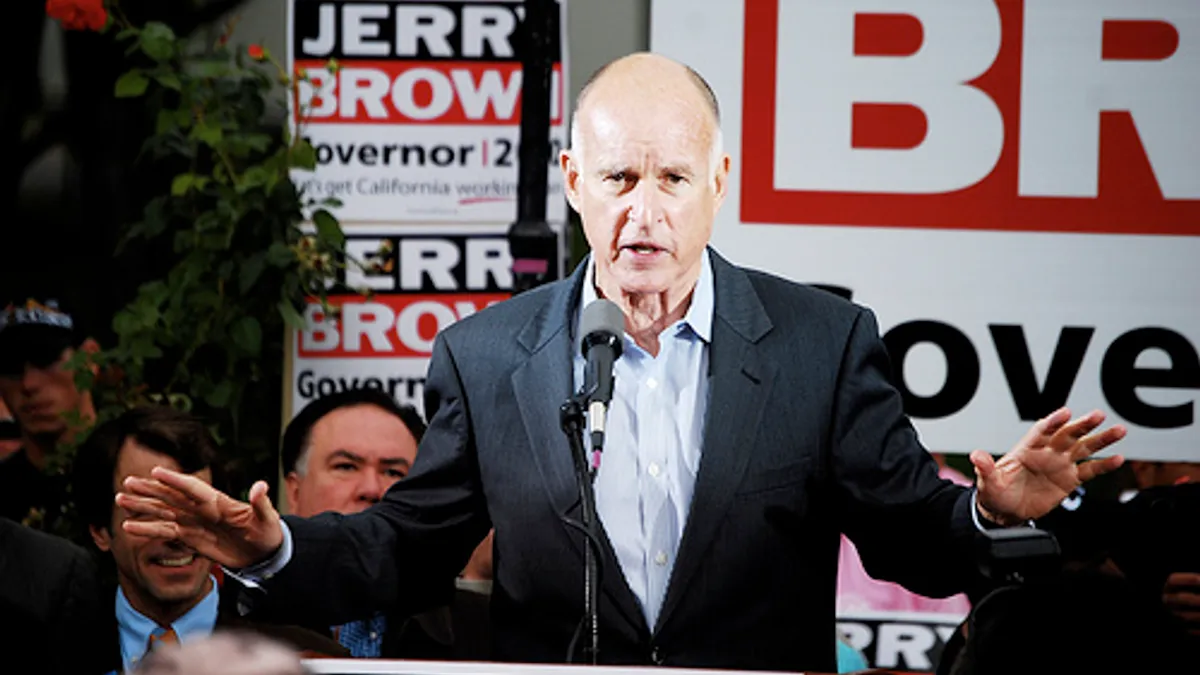Dive Brief:
- California Gov. Jerry Brown has announced that the California Air Resources Board (CARB) has proposed a plan to extend the state's cap-and-trade program through 2050.
-
The amended program would set decreasing emissions caps for covered entities through 2031, to reach 40% reductions in carbon dioxide emissions below 1990 levels.
-
Under the recommended changes the program, which is already linked to a similar program in Quebec, California's carbon trading market would also link with Ontario’s cap-and-trade program in January 2018.
Dive Insight:
California’s cap-and-trade program is the second largest in the world outside of Europe. It was put in place in response to AB 32, the 2006 legislation requiring a 30% reduction in CO2 emissions by 2020 and began operation in 2012, but it is not without problems.
The program is headed to a showdown in the legislature next month. Opponents claim the program represents a tax and requires a two-thirds majority, which was not obtained to pass the original implementing law.
Brown’s efforts to administratively extend the cap-and-trade program beyond its current 2020 expiration date have been interpreted by some lawmakers as an attempt to safeguard the program against legislative roadblocks.
Additionally, California's most recent carbon allowance auction fell short of expectations, leaving the state millions of dollars short of its revenue expectations because emissions are already projected to be below the 2020 cap.
To address allowance over-supply issues, the proposed amendments to the program would clarify that businesses can use current allowances to cover their emissions after 2020, and unsold allowances would also be placed in a higher-priced reserve that would be made available only if prices reach a certain threshold.
CARB plans to consider the proposed amendments at a September board meeting before adopting them, possibly in the spring of 2017.
Meanwhile, Oregon is studying a cap-and-trade program and Washington’s governor last year issued an executive order imposing a cap on CO2 emissions.













